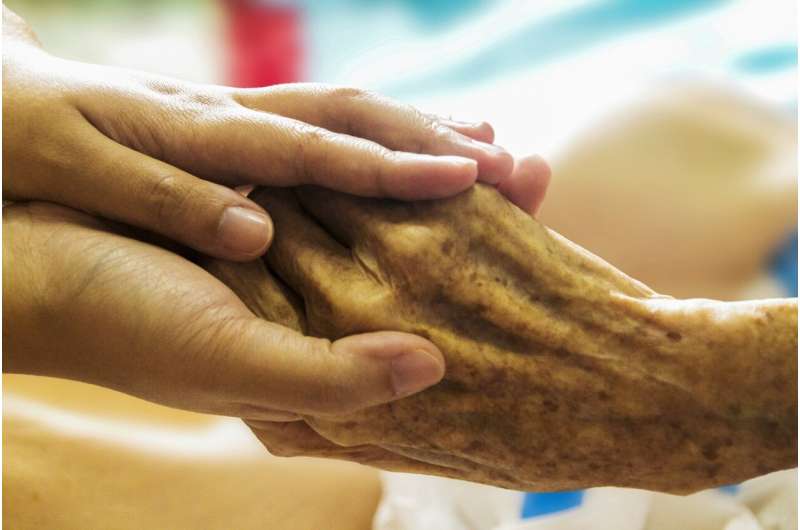This article has been reviewed according to Science X's editorial process and policies. Editors have highlighted the following attributes while ensuring the content's credibility:
fact-checked
peer-reviewed publication
trusted source
proofread
Study finds new program streamlined hospice transitions from the emergency department

For patients who are in the final stages of both gradual and sudden terminal illnesses, hospice care can provide safe, comfortable, and dignified care at the end of life. However, many patients, especially those with complex diseases and treatments, may end up in an emergency department (ED) and either die there or die shortly after being admitted into inpatient care at a hospital, despite their goals of care being better aligned with hospice care.
Researchers from Brigham and Women's Hospital, a founding member of the Mass General Brigham health care system, have designed and implemented a new program to streamline the process of transitioning patients from the emergency department into hospice care.
In a test population that included 270 patients, 54.1% transitioned to hospice within 96 hours of arriving in the ED, compared to 22.1% in the control group of patients before the new program started in 2021.
The findings suggest that such programs may help adult patients who present to the ED near the end of life avoid delayed or missed transitions to hospice care. Results are published in JAMA Network Open.
"When patients come to an emergency department near end of life, the default is typically to admit them to the hospital, engage them in conversations about goals and end-of-life care and potentially move them into hospice care. However, this lengthy progress can take longer than the patient has left to live," said first author Christopher Baugh, MD, MBA, an emergency physician in the Department of Emergency Medicine at the Brigham.
"This program helps us identify patients who may be eligible for hospice as quickly as possible while they are still in the ED and reduce the time it takes to get them into hospice care."
To identify patients who may be hospice eligible, the researchers implemented an artificial intelligence algorithm that analyzes electronic health record data as it is recorded by ED staff. This, along with dedicated care management and ED rounds to evaluate patients in person, flags potential candidates for the transition program.
These candidates, instead of being admitted as an inpatient to the hospital, were placed under an outpatient observation status, where the final decision was ultimately made by the patient and their family or caregivers, guided by a multidisciplinary team of an ED care facilitator in consultation with the Brigham's palliative care team and specialists such as oncologists or neurosurgeons as needed. Hospice teams were then available with 1–2 hours to start providing care.
"Identifying hospice candidates quickly after ED arrival mostly falls on the shoulders of ED clinicians, so our goal with the program is to make this process as simple and efficient as possible," said Baugh. "With our approach, we're able to mobilize the hospice transition within one to two days most times, which is much faster than would be possible if the patient was admitted directly into inpatient care."
While this new process helped transition a greater number of patients into hospice, the researchers emphasize that the program on its own is not enough to fully address the challenges that come with aligning care with patients' end-of-life goals and helping patients die with dignity.
The findings also revealed that having a Medical Order for Life-Sustaining Treatment (MOLST) plan, a legal document that codifies a patient's goals for end-of-life care, was associated with successfully transitioning to hospice in both the test and control groups.
On the provider side, the program also introduced biannual virtual education on the benefits of the program and the need for timely hospice transitions. This training will continue to be provided to emergency clinicians, including nurses, physicians' assistants and trainees in addition to doctors themselves.
"It's been incredibly moving to witness the care delivered by our multi-disciplinary program, and the impact on patients and families," said senior author Mallika L. Mendu, MD, MBA, vice president of clinical operations and care continuum at the Brigham.
"As a result of this program, patients and families are receiving meaningful support at a critical point in their lives, which can have a long-lasting impact on bereaved loved ones. Importantly, the program facilitates timely transition to hospice care as early as when they present to the ED, which is crucial during this current period of capacity crisis, in which patients have experienced delays in receiving care."
More information: Baugh, C. et al. A Hospice Transitions Program for Patients in the Emergency Department JAMA Network Open (2024). DOI: 10.1001/jamanetworkopen.2024.20695


















